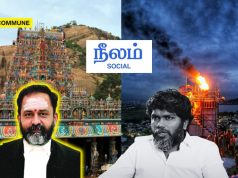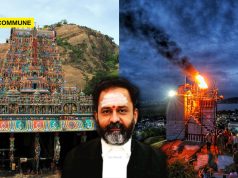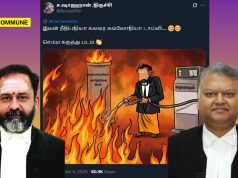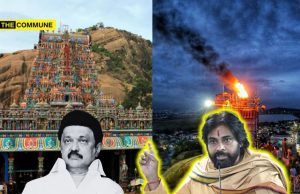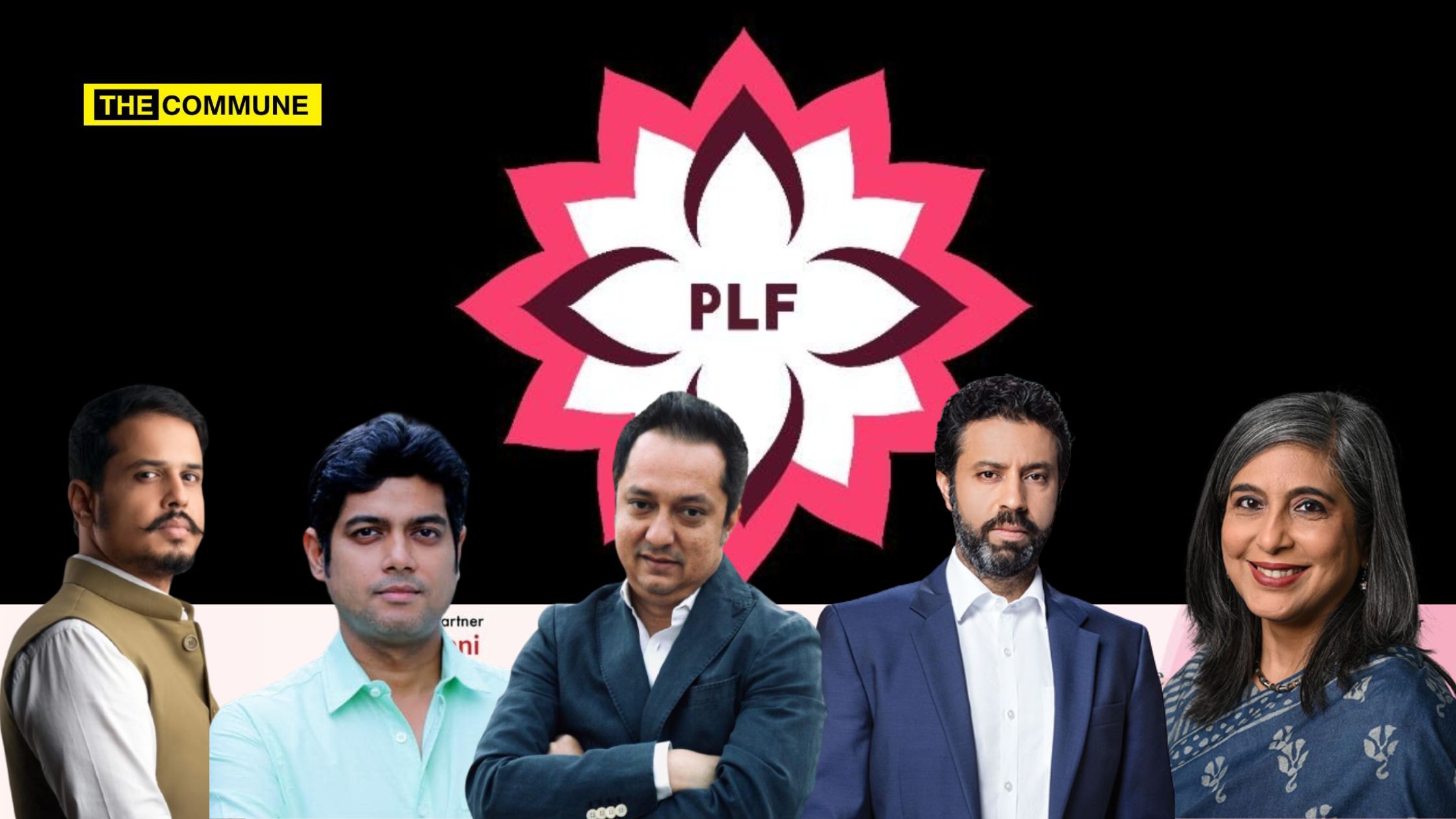
In the recently concluded Pondy Lit Fest 2023, day 3 featured a discussion on the topic of breaking news. Given the context of banning certain journalists and discussions about curbing press freedom, this topic garnered significant attention. In a specific debate titled “Breaking News Into Pieces: What Ails the Media,” moderated by Deep Halder, a journalist and writer, the panel featured prominent individuals with journalistic backgrounds. Shiv Aroor, renowned for his incisive reporting; Rahul Shivshankar, an accomplished journalist and anchor; Monika Halan, an expert in business journalism; and Abhijit Majumder, a journalist and commentator, all brought their diverse viewpoints to the discussion. Together, they engaged in an informative and insightful dialogue, offering valuable perspectives on the topic.
A Tectonic Shift In The Media House Landscape
The discussion began with moderator Deep Halder mentioning a poll conducted by Abhijit Majumder. The poll results revealed journalists to be the least trusted group, closely followed by the judiciary and political parties. Halder posed a pertinent question: why do audiences often perceive journalists as partisan, preempting their commentary on various topics? Monika Halan, though primarily a business journalist, provided valuable insights into the dynamics within newsrooms. She pointed out that until 2014, there existed a dominant party, a prominent family, and a specific journalistic narrative. Journalists adhered to this narrative or risked being marginalised. However, the year 2014 marked a turning point, bringing with it a growing national divide, compounded by the rise of social media. These powerful forces transcended traditional media, isolating journalists with alternative viewpoints. Pre-2014, suggesting that the new prime minister deserved time to prove himself was met with swift branding as a divisive figure, often accompanied by allegations of fascism, Muslim hatred, or communalism. This division, originating within newsrooms, intensified with subsequent events, such as those in 2019. Monika Halan concluded by stating that the journalistic profession is still adapting to these shifts in the political landscape.
The Media Dilemma
Deep Halder further delved into the deteriorating revenue model within the media industry, noting the growing necessity for alignment with state governments or national parties, leading to what is commonly referred to as “Godi Media.” Monika Halan shed light on this pressing issue, highlighting the fundamental economic concept known as the agency problem in media economics. The central question revolves around whose interests are prioritised—the readers/viewers or the advertisers. Bennett and Coleman, pioneers in this regard, long recognised themselves as agents of advertisers. While advertisers were initially corporate entities, the increasing corporatisation of political parties has led to their growing influence. Therefore, the media’s revenue source must be clearly defined, as failing to do so may result in advertisers taking precedence over the audience—a critical concern in the Indian media landscape.
Shifting the focus to the challenges posed by flawed revenue models, Rahul Shiv Shankar emphasised that the pressure to deliver attention-grabbing content had always existed. However, the current hurdle faced by both television and print media is the reluctance of people to pay for news, prompting media professionals to question if they inadvertently contribute to this problem. Additionally, Rahul pointed out a disparity in revenue models between India and other countries. Media success abroad is not solely determined by reaching the audience but also by capturing their time and attention, necessitating the engagement and captivation of viewers at all costs—an imposing challenge for media outlets.
Boycotting/Banning Journalists
Next, the attention turned to Shiv Aroor’s stance on supporting journalists who faced bans or imprisonment, even when differences in ideologies or journalistic approaches existed. Shiv Aroor shared his personal experiences, shedding light on the complexities of such situations.
Aroor explained that, particularly for journalists without political party allegiances in a landscape dominated by partisan media, sticking one’s neck out could be a risky endeavour. He emphasised that this act of taking a stand often made journalists targets, as political parties preferred clear alignments and disapproved of ambiguity.
Regarding the recent ban incident, Aroor expressed his bewilderment. Prominent figures from the I.N.D.I Alliance, which included Aroor, had distanced themselves from the ban, asserting their lack of involvement in the decision. The incident serves as a stark reminder of the challenges journalists face in navigating a landscape where allegiances and tensions are ever-present.
The Intersection Of Personal Opinions & Journalism
Turning to Abhijit Majumder, Halder questioned whether his outspoken views and statements on Twitter had influenced his journalism and public perception. Majumder offered his insights, characterising the current era as one filled with the potential for individuals to be tagged or labelled.
Majumder elaborated on the evolving landscape, where a long-standing 70-year-old establishment is facing transformation due to the resurgence of ideologies. This transformation is not limited to politics but extends into the realm of media. Despite this, Majumder firmly asserted that a journalist’s work, whether his or someone else’s, should ultimately speak for itself, even a decade or two down the line.
He emphasised the importance of recognising that a journalist’s contributions extend beyond their on-screen presence. Behind-the-scenes efforts within a channel can lead to significant transformations, influencing not just a few aspects but potentially a broader spectrum. This perspective sheds light on the multifaceted nature of journalism in the current dynamic landscape.
Media & Political Endorsements
Moving on to Rahul Shivshankar, Halder brought up the question of fairness of a channel inaugurating an election bus in the presence of a chief minister or a prominent member of a political party. Rahul Shivshankar offered his perspective, expressing reservations about the effectiveness of such approaches.
In Rahul’s view, the practice of channels hiring buses, embarking on journeys to interact with select individuals, and attempting to gauge public sentiment for election predictions often fall short of accurately representing the ground reality. He considered this approach shallow and questioned its validity.
Rahul believed that endorsing a particular candidate or stating support for specific principles or ideologies was perfectly acceptable. However, he stressed the importance of holding politicians accountable when they deviate from their professed positions. He acknowledged the challenge faced by television, which demands quick, binary positions to retain the audience. Despite this, he advocated for a balanced approach, where both sides are presented, complexities are acknowledged, and the channel’s leanings are shared. Such an approach, he argued, fosters open and informed debates, allowing for contributions and challenges from others in the discussion.
Prime-Time Debates: A Double-Edged Sword For Media
The discussion turned to the role of prime-time debates in the media, with Halder questioning whether anchors sometimes intentionally invited individuals who could generate high TRP by engaging in fiery arguments or using abusive language, fully aware that such content would boost viewership.
Rahul Shivshankar responded, acknowledging the limitation in their choice of participants. He pointed out that the political landscape often included candidates with criminal records, leading to confrontations with spokespersons who used foul language. He emphasised the importance of examining a party’s principles and the behaviour of its leaders in understanding why such figures have a platform.
Shiv Aroor echoed Rahul’s sentiments about the limited choices in selecting debate participants. He shed light on how the prevailing metrics favoured prime-time debates characterised by vigorous and, at times, loud discussions.
Abhijit Majumder provided a different perspective, noting that the general audience did not mind heated debates marked by shouting, dramatic expressions, and exaggerated phrases. He recounted an interaction with a former Jammu and Kashmir Peoples Democratic Party (PDP) Minister, who expressed concerns about the impact of even minor incidents of violence when aired in prime time. While Majumder suggested toning down such debates to some extent, he did not anticipate a decline in their popularity.
Evolving Media Landscape: Embracing New Platforms And Debating Labels
In a unanimous agreement, the panel acknowledged the thriving success of podcasts and emerging platforms like YouTube channels, recognising their undeniable influence in the media landscape. They emphasised the continued evolution of these platforms and the paramount importance of credibility in their growing prominence.
Shiv Aroor offered his perspective on the term “Godi Media,” attributing its emergence to deep-seated frustration within certain groups amid ongoing changes in the media landscape. On the other hand, Abhijit expressed a contrasting view, asserting that such labels held little significance. What truly mattered, he believed, was whether one’s stance stemmed from conviction or opportunism. These insights shed light on the ongoing transformation of the media and the evolving dynamics within it.
Click here to subscribe to The Commune on Telegram and get the best stories of the day delivered to you personally.

